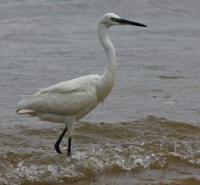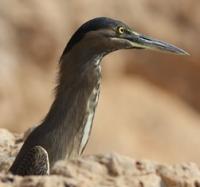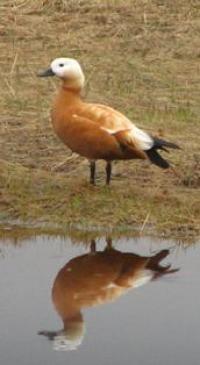You are here
Physico-geographical characteristics of Korgalzhyn reserve.




Birding Tours Korgaldzhin reserve.
“I love tulips better than any other spring flower; they are the embodiment of alert cheerfulness and tidy grace, and next to a hyacinth look like a wholesome, freshly tubbed young girl beside a stout lady whose every movement weighs down the air with patchouli. Their faint, delicate scent is refinement itself; and is there anything in the world more charming than the sprightly way they hold up their little faces to the sun. I have heard them called bold and flaunting, but to me they seem modest grace itself, only always on the alert to enjoy life as much as they can and not be afraid of looking the sun or anything else above them in the face.”
Elizabeth von Arnim, Elizabeth and Her German Garden.
Walking tour to Korgaldzhin reserve.
Tengiz – Kurgaldzhinskyi hollow situates in the junction of stepped and half deserted zones, separatig Kazakhstan hills from Kokchetau hills. Square of hollow is 13 000 km², average altitude is 30 – 40 m. Climate of Preserve region is sharply continental. Absolute maximum temperature in July is 44°, absolute minimum in January is 49°.
Thus, annual amplitude of air temperature can reach 93°. Annual quantity of precipitations is 200 – 350 mm. Winter is protracted, cold with powerful South – West winds and often snow – storms. Average perennial temperature of January – 16,4°.
Spring begins in first 10 days of March. Summer is not protracted and hot. Average temperature of July is 24,4°. Autumn differ from them with slow falling of temperature. Kurgaldzhin lake has square of 330 km², length of coast line is 187 km.
Lake is very shoal – watered with the depth of 0,5 – 3 m, bottom is clay, flat covering by gray or black silt. There are nearly 40 islands in reservoir, biggest from them are: Aral – Tube, Kokpekty, Zhar – Tube. Kurgaldzhi is the kingdom of reeds and rogozs.
Their growth occupies 70 - 80% of water mirrow. Tengiz has the square of 1590 km², length of coast line – 488 km. There are 70 islands, which situate in East part. Tengiz – Kurgaldzhinskyi hollow covered with firm dark – chestnut (Northern part) and bright – chestnut (Southern part) soils.
The preserve is situated in inter-mountain hollow. Relief is mainly flat, with mounds to 30 - 40metres. The climate is harsh continental. In summer from Central Asian deserts comes hot air, in winter cold arctic air. There is no almost wet air from Atlantic. ?
The maximum of temperature in July is + 44 and the minimum in January is – 44. Here are winds of west and south-west stream, they are more strong in winter and in spring. The maximum speed of wind 30 - 32 m. per second.
The most sediments are in May. There are steady downpours in autumn. The winter is long, cold with strong south-west winds and with frequent snow-storms. Steady blanket of snow is formed at the end of October and at the beginning of November.
More snowing in February and March. In this period the altitude of blanket of snow reaches 20-30cm., and in steppe 10 - 15cm Reservoirs are frozen at the end of October- at the beginning of November; at the end of April the ice is thawing.
The spring is begin in the 1st decade of March. The summer is hot and not long. In hot summer days we can see a mirage, which is inherent for desert. The Great Lakes of North and Central Kazakhstan are Tengiz and Korgalzhin-the remains of ancient sea.
The main source of lakes are the rivers: Nura, Kon, Kulanutpes. In spring the level of the water of these places up to 4 - 5m. Only Nura has constant stream, Kon and Kulanutpes often get to dry. Korgalzhin lake has a territory of 330sqkm, the stretch of shore line is 187km.
North shores are high, south shores are sloping. The lake is shallow, the depth is 0,5 - 5m; the bottom is flat and clayey covered by gray or black silt. The water is mild salt. There are about 40 islands. The largest of them are Araltobe, Kokpekty, Zhartobe.
The thickets occupy about 70 - 80% of water covering. The reed divides the whole reservoir into some large gulfs which have their own name. The largest of them are situated in the Korgalzhin: Esey, Sultan-Keldy, Kokai, small Karakol, Taban-Kaza and others.
In 1940 Korgalzhin lake was absolutely dried up, but Tengiz’s water was only in a small territory of reach, and in the bottom of the lake was built a road. Tengiz lake (in kazakh “sea”) has a territory of 1590sqkm, length of shore line is 488km. The water is bitterly salt.
Tengiz took 12th place among the Soviet Union’s lakes. The depth of the lake in 1945 was 8m, but last years no more than 1,5 - 2,5. The lake has stretch form, it’s length is 85, width is 32km. There are about 70 islands. In these islands nest different colonies of sea-gulls and snipes, and also rarest birds of our fauna-flamingo and pelican.
The bottom of the lake is clayey, covered by gray and black silt with smell of hydrogen sulfide. Now the level of the lake is down. The lakes of Korgalzhin full of fishes, including industrial kinds. They are: golden and silver carp, pike, tench, perch, roach.
There are no fishes in Tengiz because of salt water. In the preserve there are few amphibious and reptiles. In the lakes and flood-lands live frog and green toad. Korgalzhin lake is ornithological preserve because of many birds live there.
Numerous of feathered are sparrow’s, 2/3 of them belong to 5 classes. According to the kinds they are distinguished into 3 orders: snipe, predatory and sea-gulls. Nesting birds-are the largest group of birds with the typical representatives of average latitude (as gray goose, pewit, lake sea-gull, gray crow, field lark) in the preserve also nest such south birds as flamingo, curly pelican, white heron, sea-dove, linnet and others.
The ancient lake-Tengiz… Ancient birds nesting in it’s islands are wonderful pink flamingos, may be the most beautiful birds of our fauna. These flamingos are northern nesting colony in the world. They lived here when whole Tengiz-Korgalzhin hollow was the Tetis sea.


Authority:
"Korgalzhyn State Nature Reserve." Sidorova T.
Photos
Alexander Petrov.







